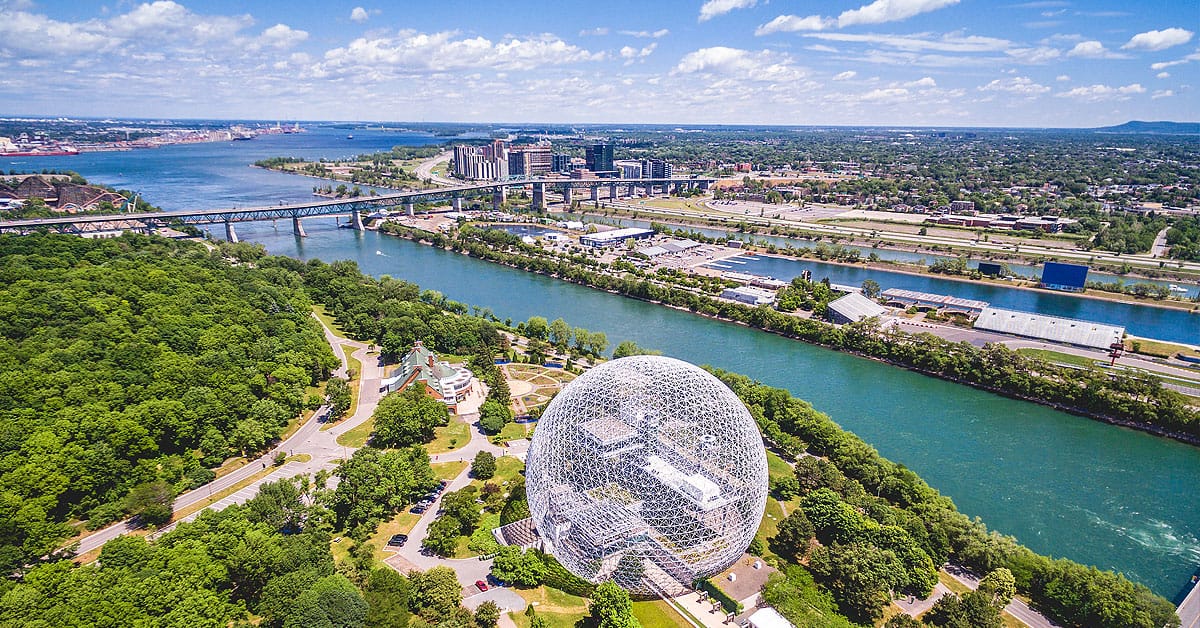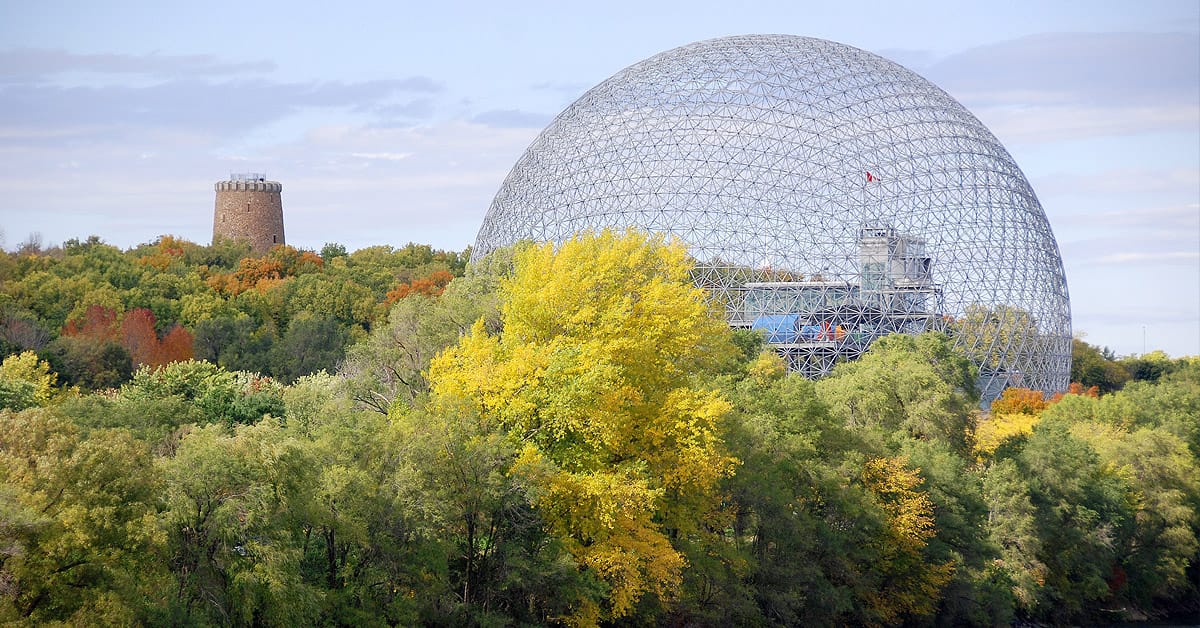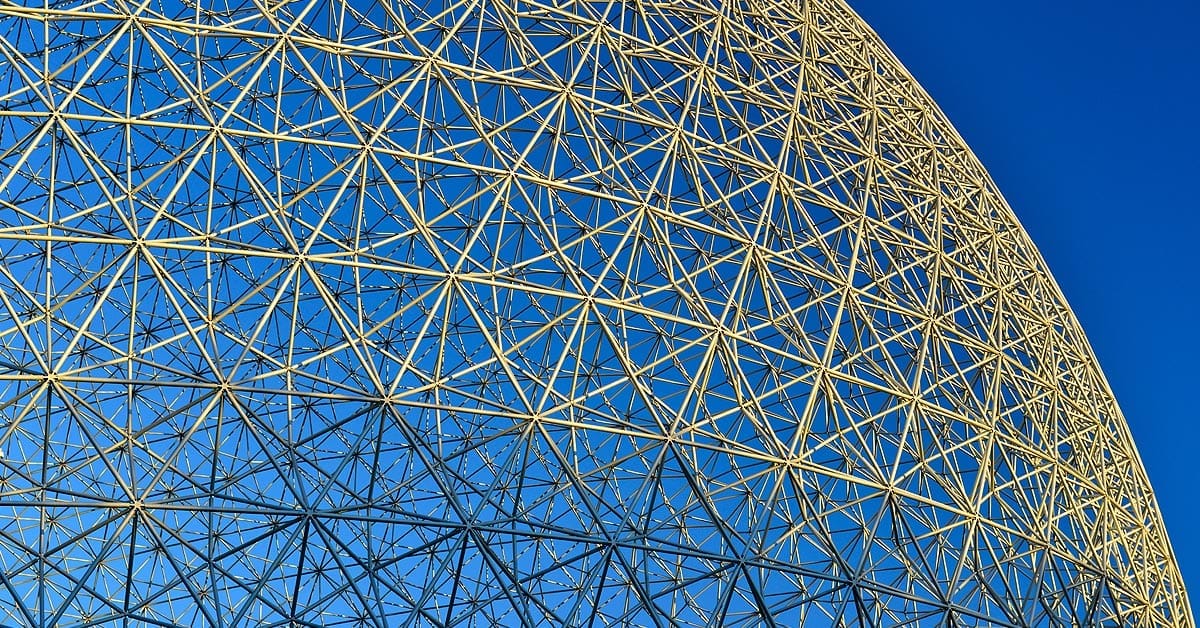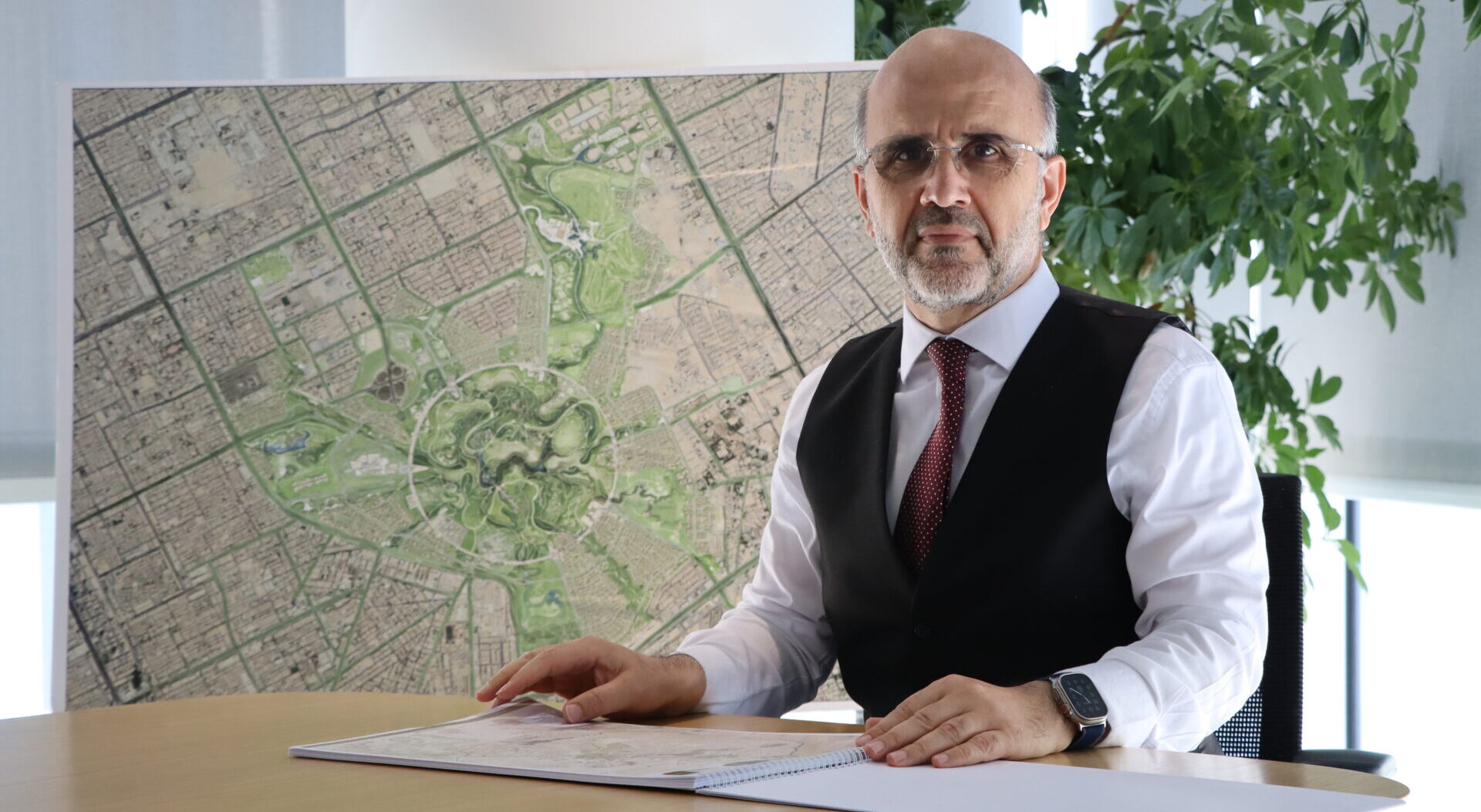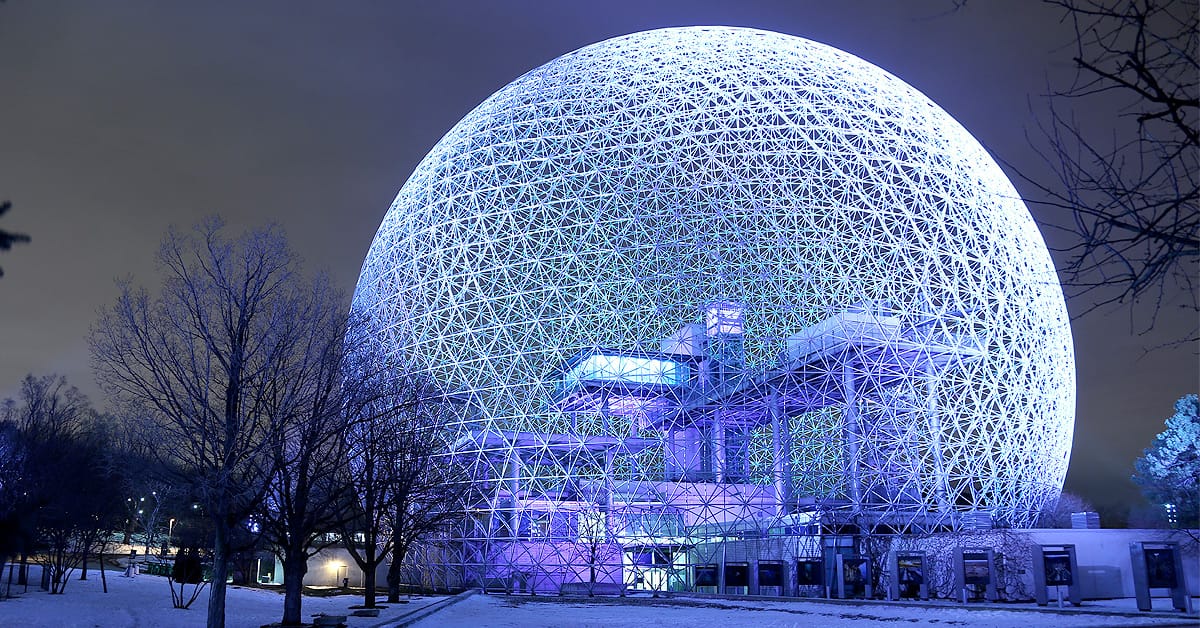 Biosphere, Montreal, Canada. Geodesic dome designed by Buckminster Fuller, to be the pavilion of the United States for the Expo 67. Photo © Pinkcandy
Biosphere, Montreal, Canada. Geodesic dome designed by Buckminster Fuller, to be the pavilion of the United States for the Expo 67. Photo © Pinkcandy
“A great World’s Fair,” according to Museum of Modern Art curator Paola Antonelli, “is a plausible fantasy based on the impact of science and technology on society.” The 1967 International and Universal Exposition, known as Expo 67, which opened to the public on 27 April 1967 and attracted more than 50 million visitors to Montreal, was no exception. Among the 90 pavilions at Expo 67, several expressed new potentials for architecture and engineering.
One of the most ambitious was the Biosphere, a 76-meter diameter spherical geodesic dome designed by Buckminster Fuller in collaboration with Japanese engineer Shoji Sadao as the United States Pavilion. Fuller believed that reducing the weight of buildings the key to material efficiency and planetary sustainability, so he designed the steel-and-acrylic dome to have the lowest possible ratio of weight to enclosed volume. A system of adjustable shades and “pores” to control the internal environment did not function as planned. The acrylic infill was destroyed in a fire in 1976, exposing the lattice structure composed entirely of three-inch steel tubes welded together — an example of the modular, efficient approach that Fuller hoped would enable technological solutions to environmental problems.
The German Pavilion was a radical experiment in lightweight tensile canopy structures. Designed by German architect and engineer Frei Otto — with whom Omrania later collaborated on the design of the Tuwaiq Palace — the pre-fabricated pavilion was erected on site in a mere six weeks. Otto’s system of masts and canopies could be adapted to any site, and could be dismantled and reused just as quickly as it was constructed. The pavilion thus demonstrated an architecture of strength, efficiency, and versatility.
A half-century after Expo 67, it is apparent that only some of the proposed innovations were widely adopted. Yet there remains enduring value in these international attempts to apply technology for the benefit of humankind.
REFERENCES:
Andrew Garn, Exit to Tomorrow: World’s Fair Architecture, Design, Fashion 1933-2005, New York: Universe Publishing, 2007.
Francis D.K. Ching, Mark Jarzombek, Vikramditya Prakash, A Global History of Architecture, Hoboken: John Wiley & Sons, Inc., 2011.
Joan Ockman, Architecture Culture 1943-1968: A Documentary Anthology, New York: Rizzoli, 1993






